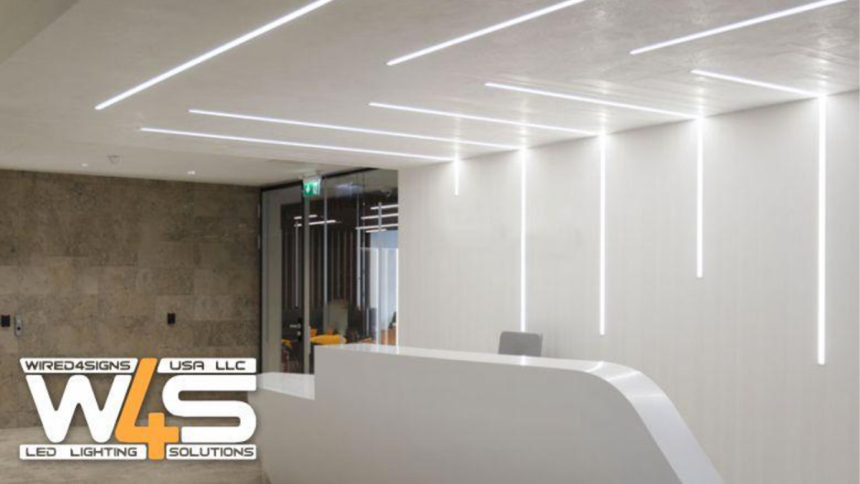Everyone needs to accept personal responsibility for environmental protection. Most of us probably already know about ways to limit our impact on the environment by doing things like recycling.
New and future technologies can help us cut carbon emissions, but few people know about them. This is illustrated by the various ecological benefits of linear LED lighting.
Greater energy efficiency
When compared to incandescent and fluorescent bulbs, linear LED lights can save up to 80% of energy.
With LEDs, just 5% of the energy is lost as heat, meaning that 95% of the energy is used to produce light. In comparison, fluorescent lights waste 95% of their energy as heat instead of light.
Linear LED lights also consume significantly less energy than conventional bulbs; a 36-watt LED may effectively replace a standard 84-watt fluorescent. Less energy use means less work for power plants and fewer emissions from such facilities.
No toxic materials
There are no hazardous materials in linear LED lights. Most workplaces today utilize fluorescent strip lights, which emit a lot of heat and often include harmful substances like mercury. When put in a landfill, this will release harmful chemicals into the ground.
Toxic waste disposal must be organized through a certified trash carrier, thus making the conversion to LED saves time and money while protecting the environment from additional toxins.
Fewer installation requirements
Lighting fixtures that use incandescent bulbs or fluorescent tubes, for example, waste energy by shining light in every direction, including up toward the ceiling, where it isn’t needed.
As a result, you can replace fewer incandescent or fluorescent bulbs with LEDs while still getting the same amount of light. Fewer light installations will help save money and electricity, which is good for the planet.
A longer lifespan
Carbon emissions decrease with increased longevity. LED lights can outlast incandescent bulbs by up to six times, making them more cost-effective in the long run. Since less energy is expended on lighting, less raw materials and finished goods as well as packaging and transportation are consumed.
How do LED lights work
LEDs are essentially miniature light bulbs that may be wired into a system. They don’t become as hot as incandescent bulbs and don’t have fragile filaments that burn out. They are more cost-effective since they consume less energy.
Electron mobility in a semiconductor substance is what makes LED lights shine. A semiconductor has both a positive and negative parts.
The negative layer contains free-floating electrons, while the positive layer has holes for the electrons to enter. Electrons move from the semiconductor’s negative to its positive layer when an electric charge is applied to the material. As the electrons, now positively charged, flow into the holes, they emit light.
In addition to saving money over time, LED lights can also illuminate a space more brightly and in a wider range of colors. LEDs don’t use mercury, and recycling the metal from their heat sinks would significantly lessen their environmental effect over their whole lifetime.
LEDs are the most eco-friendly option because they last longer, use less energy, and are easier to build.
You might also be interested in: Less is More: 8 Essential Tips for A Minimalist Home
Lynn Martelli is an editor at Readability. She received her MFA in Creative Writing from Antioch University and has worked as an editor for over 10 years. Lynn has edited a wide variety of books, including fiction, non-fiction, memoirs, and more. In her free time, Lynn enjoys reading, writing, and spending time with her family and friends.















